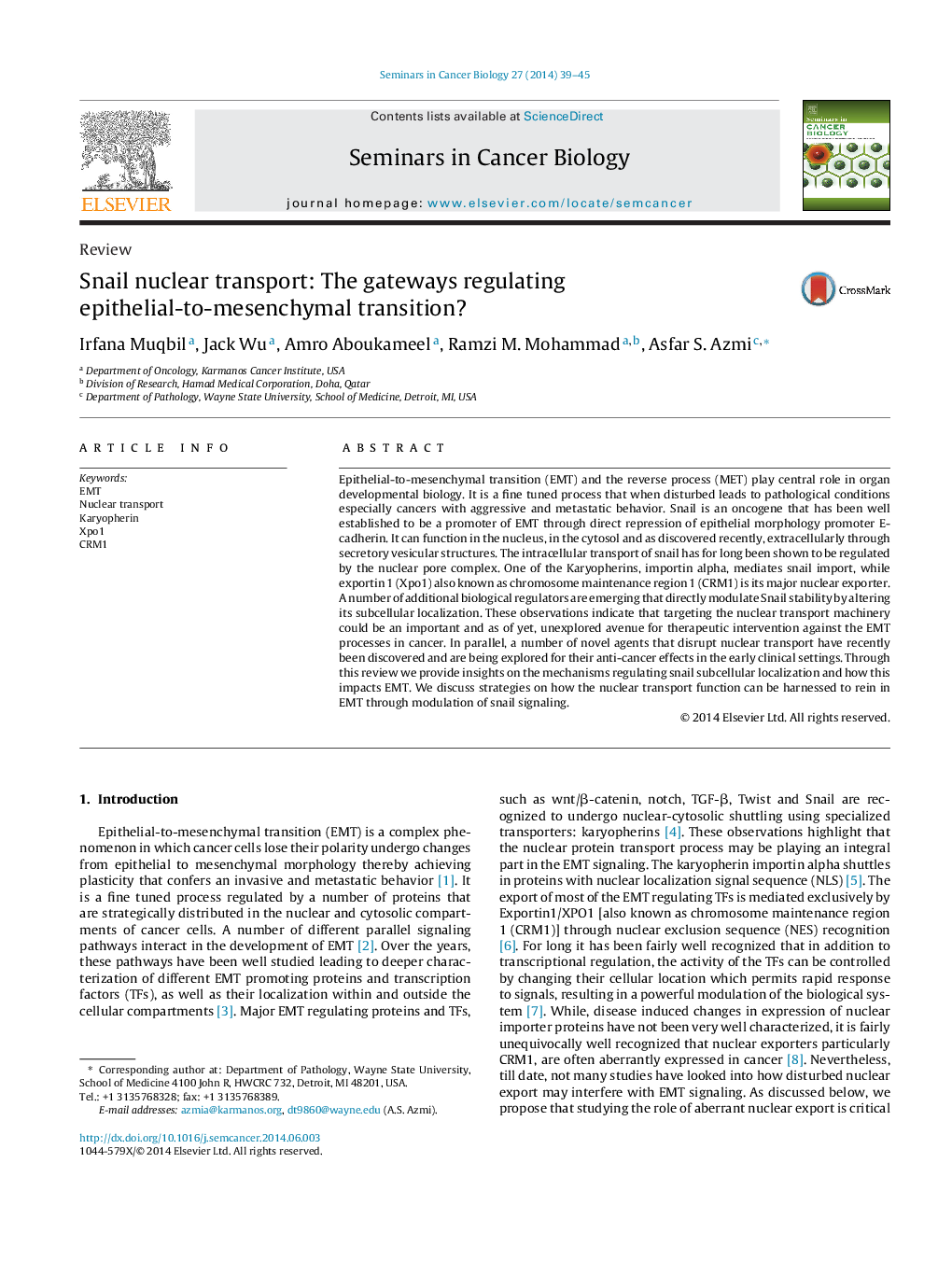| Article ID | Journal | Published Year | Pages | File Type |
|---|---|---|---|---|
| 2023691 | Seminars in Cancer Biology | 2014 | 7 Pages |
Abstract
Epithelial-to-mesenchymal transition (EMT) and the reverse process (MET) play central role in organ developmental biology. It is a fine tuned process that when disturbed leads to pathological conditions especially cancers with aggressive and metastatic behavior. Snail is an oncogene that has been well established to be a promoter of EMT through direct repression of epithelial morphology promoter E-cadherin. It can function in the nucleus, in the cytosol and as discovered recently, extracellularly through secretory vesicular structures. The intracellular transport of snail has for long been shown to be regulated by the nuclear pore complex. One of the Karyopherins, importin alpha, mediates snail import, while exportin 1 (Xpo1) also known as chromosome maintenance region 1 (CRM1) is its major nuclear exporter. A number of additional biological regulators are emerging that directly modulate Snail stability by altering its subcellular localization. These observations indicate that targeting the nuclear transport machinery could be an important and as of yet, unexplored avenue for therapeutic intervention against the EMT processes in cancer. In parallel, a number of novel agents that disrupt nuclear transport have recently been discovered and are being explored for their anti-cancer effects in the early clinical settings. Through this review we provide insights on the mechanisms regulating snail subcellular localization and how this impacts EMT. We discuss strategies on how the nuclear transport function can be harnessed to rein in EMT through modulation of snail signaling.
Related Topics
Life Sciences
Biochemistry, Genetics and Molecular Biology
Biochemistry
Authors
Irfana Muqbil, Jack Wu, Amro Aboukameel, Ramzi M. Mohammad, Asfar S. Azmi,
